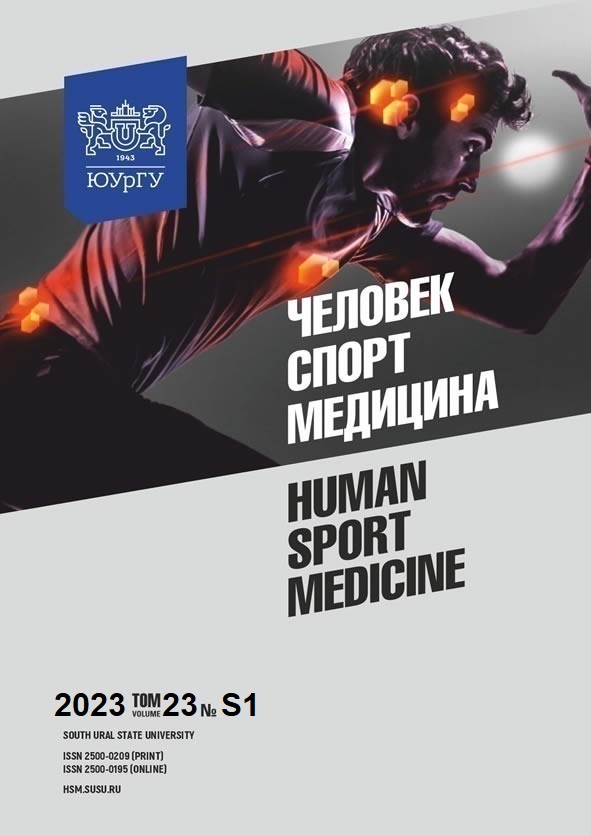DEVELOPING AN INFORMATION SYSTEM OF MORPHOLOGICAL, PSYCHOLOGICAL, AND FUNCTIONAL TESTING FOR SPORTS SELECTION IN RHYTHMIC GYMNASTICS
Abstract
Aim. The paper was aimed at the development of a system of morphological, psychological, and functional testing and related technologies for sports selection in rhythmic gymnastics. Materials and methods. The following methods were used for the purpose of this study: object-oriented programming (C++), functional assessment (heart rate variability), plethysmography (hemodynamics), as well as spirometry, anthropometric measurements, dynamometry, psychophysiological assessment, sports and pedagogical methods, and statistical processing. Results. The factor analysis demonstrated that successful athletic performance in rhythmic gymnastics depended on a great and complex set of significant factors, which included the performance of the cardiovascular and respiratory systems, the strength index, body type features, and mental performance. The results obtained allowed for the development of a technology that could identify children’s predisposition to rhythmic gymnastics. This technology includes psychophysiological and morphofunctional tests, along with the assessment of physical fitness. The resulting program consists of the following blocks: psychophysiological assessment, morphological status, personality tests, the Harvard Step Test, and physical fitness. Conclusion. An assessment program for sports selection in rhythmic gymnastics among children and the corresponding information system were developed. Software testing confirmed its efficiency in the assessment of the morphofunctional state of children during their first steps
in rhythmic gymnastics.
References
References on translit
Copyright (c) 2023 Human. Sport. Medicine

This work is licensed under a Creative Commons Attribution-NonCommercial-NoDerivatives 4.0 International License.















